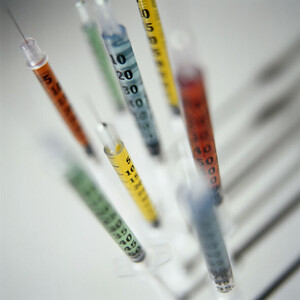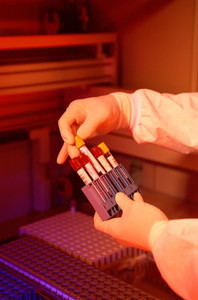The US government could establish “a properly constructed biosimilars pathway” by providing original developers of biotech drugs with at least 12 years of intellectual property protection to allow them to recover their investments in such treatments, writes former Vermont Governor, Mr Howard Dean, in his commentary. Two bills for follow-on biologics introduced in the House and Senate "include a balanced approach that protects patient safety and encourages research that helps bring new, more advanced treatments – and even cures – to patients around the world," Mr Dean writes.
Biotech drugs need adequate patent protection
Biosimilars/News
|
Posted 14/09/2009
 0
Post your comment
0
Post your comment
The US Congress is now developing a regulatory pathway for the approval of biosimilars – medicines that are similar to, but not the same as, breakthrough biologicals. Some inaccurately suggest that biosimilars are essentially generic versions of traditional pharmaceutical drugs. Biologicals are actually much more complex than traditional drugs and cannot be copied using existing science. By expanding market competition, biosimilars can expand access to and reduce the cost of these cutting-edge drugs. But if the initial breakthroughs are not supported by adequate patent protection, innovation in America will die. And given the complexity of biologicals, a properly constructed biosimilars pathway must provide necessary protections to ensure patient safety.
A commonsense and fair approach, similar to the process and timeline currently in place for generic versions of chemical-based medicines, would allow the original developer of the biological to protect the proprietary data used to develop the medicine for at least 12 years. A shorter exclusivity period would prematurely rob biotech innovators of their intellectual property and destroy incentives to develop new cures. Most firms would be unable to recoup their investments in new medicines, which ordinarily top US$1 billion (Euros 690.97 million) and involve 15 years of research and development. If we discourage investment, we jeopardise the development of the next generation of breakthrough medicines and cures.
These principles are incorporated in biosimilars legislation sponsored by Representatives Anna Eshoo, Jay Inslee and Joe Barton in the House (HR 1548), in The Biologics Price Competition and Innovation Act introduced by late Senator Edward Kennedy, and Mr Mike Enzi in the last Congress. Both bills include a balanced approach that protects patient safety and encourages research that helps bring new, more advanced treatments and even cures to patients around the world. To encourage market competition, this should be combined with provisions that allow the patent life to begin running at the time of FDA approval, not at the time of application. Frivolous lawsuits over patents also should be eliminated at the end of patent life.
Today, too many diseases and disorders remain with no treatment or treatment with limited therapeutic benefit. With the right balance, we can set a path for biosimilars that maintains the highest standards for patient safety, lowers costs and increases access today while providing the necessary incentives for new therapies and cures tomorrow.
Source: BIO Smartbrief, The Hill
Research
Reaching ESG goals in pharmaceutical development
What is the future for the US biosimilar interchangeability designation
General
Samsung Bioepis wins Pyzchiva case; Regeneron patent rulings threaten foreign biosimilars
Chinese biosimilars go global: growth, partnerships, and challenges
EMA recommends approval for four biosimilars targeting three therapies

Biosimilars/News Posted 10/10/2025
FDA approves first interchangeable rapid-acting insulin biosimilar, Kirsty

Biosimilars/News Posted 03/10/2025
The best selling biotechnology drugs of 2008: the next biosimilars targets







Post your comment